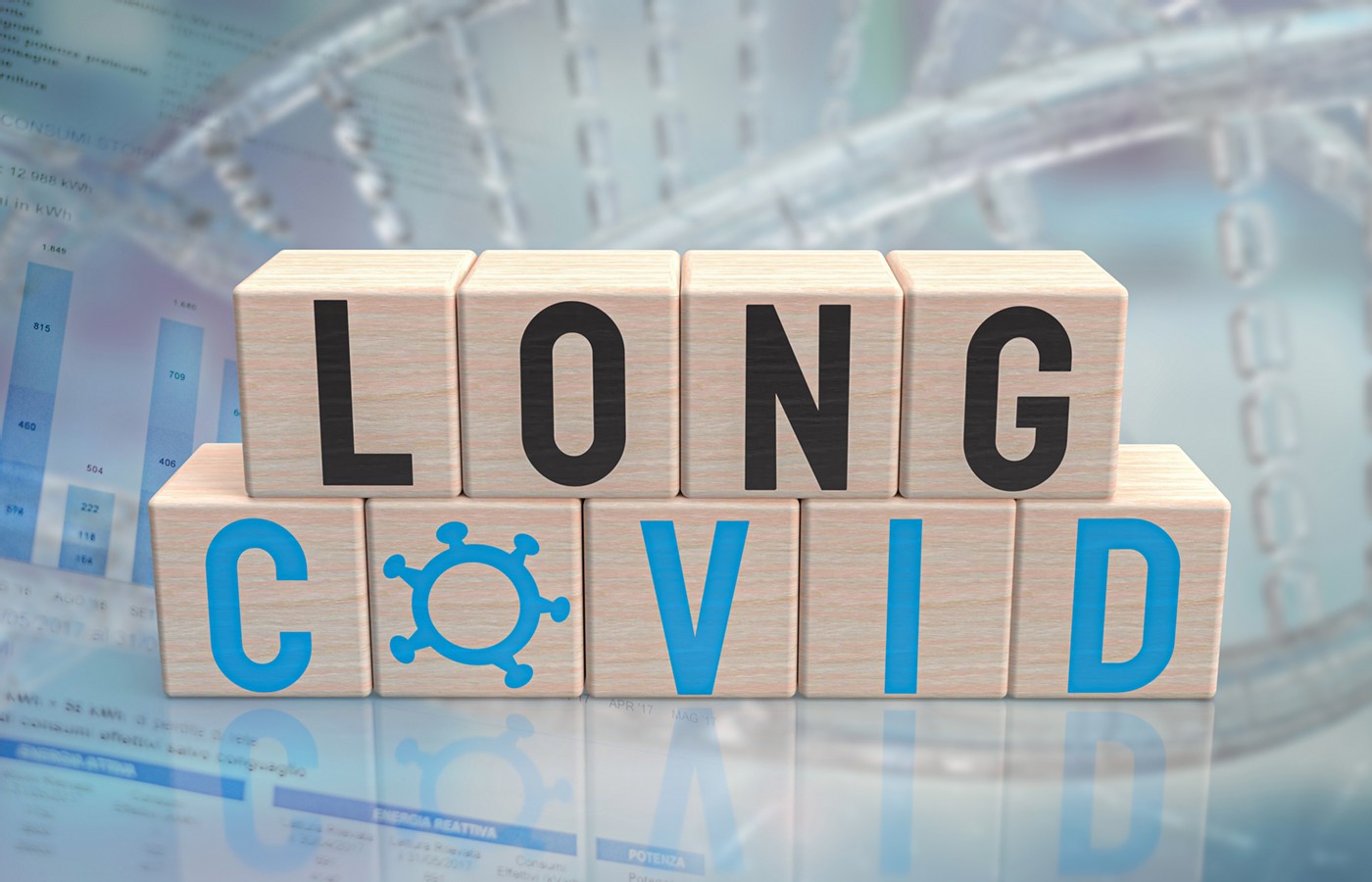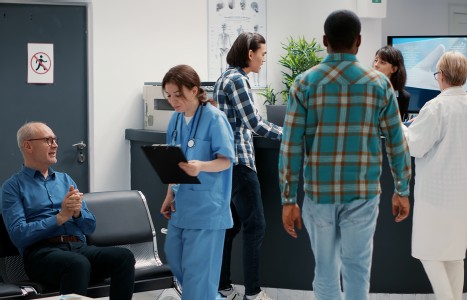When I graduated from chiropractic college in 1981 and started practice, I heard it all, and very little was positive. “You are a quack; you do not know what a subluxation is; you couldn’t get into a real health care program, so you chose the one that is slightly above a mail-order degree; you have no proof that chiropractic works; Are you really licensed?”, and so much more.
| Digital ExclusiveChiropractic Care in the Management of Long COVID (Pt. 2)
Editor's Note: Part 1 of this article appeared in the October web edition and discussed three case reports demonstrating various symptomatic improvements with chiropractic care.
Results observed in case reports can be due to spontaneous recovery, rather than the practitioner’s intervention. For the patients discussed in this paper, the chronicity of their clinical problems, combined with their rapid improvement under chiropractic care, suggests genuine physiological benefit from the chiropractic adjustments and adjunctive procedures.
While case reports do not offer the opportunity for statistical analysis generated by the randomized, controlled trial, the case report can reveal important information that may be lost by more fastidious forms of research. For example, patient #1’s initial reverse digit span of 5 was not below normative levels for an adult, but her distress when performing the task was important to note. Patient #2’s improvement in the Gupta, et al., hyposmia scale was not as impressive as her narrative account of improved olfactory perception.
Outcomes such as these are revealed by understanding the experiences of the patient. These experiences often cannot be readily quantified for statistical treatment, yet they are relevant to the clinician and very relevant to the patient. At our current level of understanding of the long COVID phenomenon, such narrative outcomes will probably be of great importance for some time to come.
Patient #2’s early ability to detect unpleasant odors, whether real (litter box, mildew) or parosmia-based (house on fire), may reflect the importance of such odors for survival. Unpleasant odors are often harbingers of situations that threaten a person’s well-being. It is not implausible that evolution has made recovery of these unpleasant perceptions a more urgent priority than the recovery of pleasant aromas such as honeysuckle, oleander, grass, and eucalyptus. If this is the case, testing patient response to unpleasant odors may be a more sensitive outcome measure of recovery than testing with pleasant aromas.
Several investigators have discussed the ability of the COVID-19 virus to interfere with the ability of the cells to remove aged and damaged mitochondria; as well as blockage of biosynthesis of coenzyme Q10 (ubiquinone).8-9 This “mitochondrial hijacking” may persist after the acute infection has ended.
The deleterious impact of mitochondrial hijacking on cellular respiration can plausibly be a factor in any clinical challenge related to energy production, including the fatigue, cognitive dysfunction, neuralgic pain, reading intolerance, and olfactory disturbance experienced by our patients and many other long haulers.
While the precise mechanism of COVID-induced mitochondrial hijacking is under active investigation, it seems wise to support the long hauler’s respiration at all levels, from the musculoskeletal to the molecular. In this regard, the robust improvement in forced vital capacity demonstrated by patient #3 is encouraging. Her experience is consistent with previous reports of improved breathing capacity under chiropractic care.13-18
That yogic alternate nostril breathing may have played a role in patient #2’s recovery is a further indication of the potential importance of respiratory support for the long-haul victim.
Patient #3 did not relate a history of obstructive sleep apnea. However, given her pharyngeal discomfort, it would not be surprising if she was troubled by some hypoxic episodes during sleep. That the oropharyngeal exercises seemed to have benefitted her may signify reliefof obstructive sleep apnea that is subclinical, or at least not yet diagnosed.
For patient #2, supplementation with coenzyme Q10 and B complex may have helped her better manage the energy-disrupting complex of mitochondrial hijacking and statin use.
These observations suggest a number of avenues for integrative care of the COVID long hauler. Practitioners of chiropractic and clinical nutrition can work with conventional medical practitioners in helping patients compensate for the effects of mitochondrial hijacking. This would be of special significance for patients taking statins or other drugs that disrupt mitochondrial function.
The potential value of breathing exercises suggests integration of chiropractic practitioners
with yoga instructors and respiratory therapists. When pharyngeal symptoms are involved, speech therapists offer a broad armamentarium of oropharyngeal exercises from which to draw, and long experience in teaching them to patients. There may be much to be gained by the integration of speech therapists with chiropractic practitioners.
Patient #1’s difficulty with reading plausibly indicated a discoordination of binocular fusion, possibly related to mitochondrial hijacking. For patients with similar problems, integrating chiropractic care with visual training as practiced by doctors of optometry could accelerate recovery, lending a much-needed boost to the patient’s quality of life.
Clinical Takeaway
Long COVID can affect any system of the body. The scientific community’s understanding of this phenomenon is in its early stages. We hope many other chiropractic practitioners publish case reports documenting their experience with these patients. It seems to us that it is almost impossible to care for these patients without learning something of clinical value each time.
References (pts. 1 and 2)
- Whole Health System Approach to Long COVID. Veterans Administration, Aug. 1, 2022. Read Here
- Blum C. COVID-19 and the role of chiropractic in the healthcare arena with non-pharmaceutical prevention, early treatment, and care for those with Long COVID syndromes: Part 3 - Long COVID. Asia-Pac Chiropr J, 2021;2:5. Read Here
- Masarsky CS, Todres-Masarsky M. Long haul COVID-19 and subluxation: a case report. Asia-Pac Chiropr J, 2022;2:6. Read Here
- Masarsky CS, Todres-Masarsky M. Long COVID hyposmia / parosmia and subluxation: a case report. Asia-Pac Chiropr J, 2022;3:2. Read Here
- Masarsky CS, Todres-Masarsky M. Case report: long COVID pharyngitis, possible glossopharyngeal neuralgia, and subluxation. Asia-Pac Chiropr J, 2023;4:1.
- Walther DS. Applied Kinesiology - Synopsis. Pueblo, CO: Systems DC, 1988.
- Tan JT, Barry AR. Coenzyme Q10 in the management of statin-associated myalgia. Am J Health-System Pharm, 2017;74(11):786-793.
- Sun J, Liu Q, Zhang X, et al. Mitochondrial hijacking: a potential mechanism for SARS-CoV-2 to impair female fertility. Med Hypoth, 2022 (March);160:110778. Read Here
- Stefano GB, Buttiker P, Weissenberger S, et al. The pathogenesis of long-term neuropsychiatric COVID-19 and the role of microglia, mitochondria, and persistent neuroinflammation: a hypothesis (editorial). Med Sci Monit, 2021 (May 10);27:e933015.
- Garg R, Malhotra V, Tripathi Y, Agarawal R. Effect of left, right and alternate nostril breathing on verbal and spatial memory. J Clin Diagn Res, 2016;10(2):CC01-CC03. Read Here
- Guimaraes KC, Drager LF, Genta PR, et al. Effects of oropharyngeal exercises on patients with moderate obstructive sleep apnea syndrome. Am J Resp Crit Care Med, 2009;179(10):962-6. Read Here
- Gupta N, Singh PP, Goyal A, Bhatia D. Assessment of olfaction using the “I-smell” test in an Indian population: a pilot study. Indian J Otolaryngol Head Neck Surg, 2013;65(1):6-11. Read Here
- Engel R, Vemulpad S. The effect of combining manual therapy with exercise on the respiratory function of normal individuals: a randomized control trial. J Manipulative Physiol Ther, 2007; 30:509-513. Read Here
- Kessinger R. Changes in pulmonary function associated with upper cervical specific chiropractic care. J Vertebral Sublux Res, 1997;1(3):43-49.
- Masarsky CS, Weber M. Chiropractic and lung volumes – a retrospective study. ACA J Chiropractic, 1986;20(9):65.
- Masarsky CS, Weber M. Screening spirometry in the chiropractic examination. ACA J Chiropractic, 1989 (FEB);23:67-68.
- Masarsky CS, Weber M. Somatic dyspnea and the orthopedics of respiration. Chiropractic Technique, 1991;3:26-29.
- Masarsky CS, Weber M. Chiropractic management of chronic obstructive pulmonary disease. J Manipulative Physiol Ther, 1988;11:505-510.



